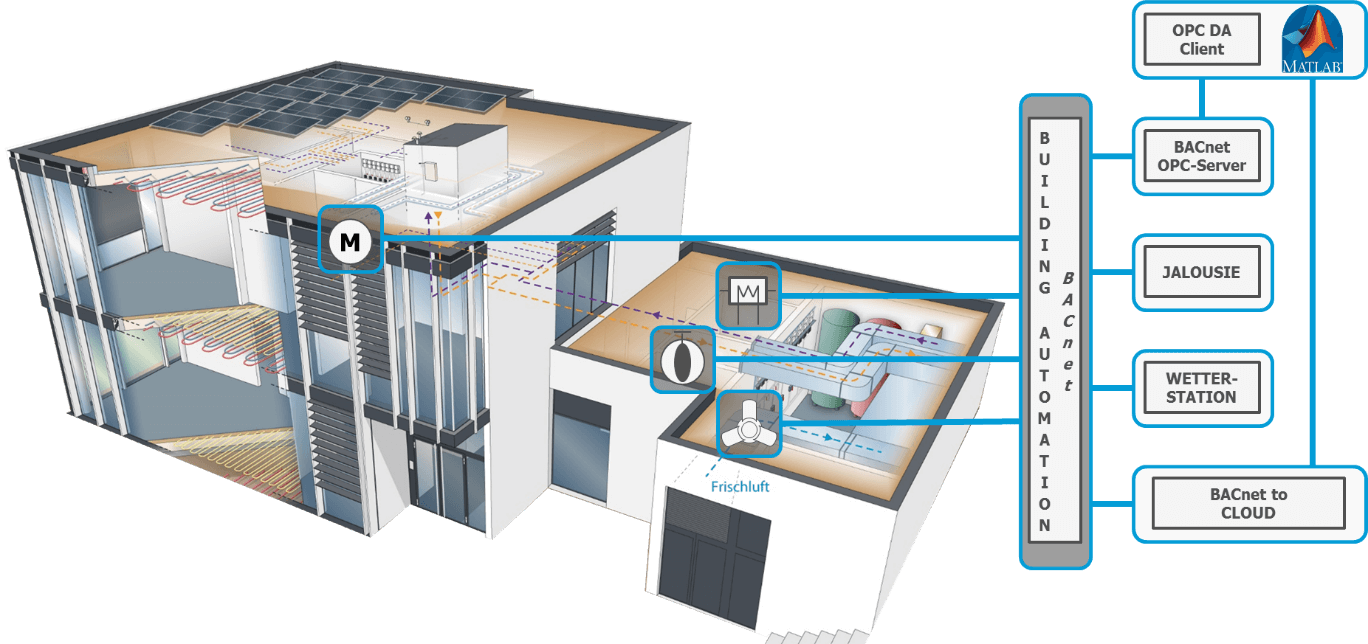AFOM - Automatic failure and optimisation analysis by data-acquisition
Short Description
Status
ongoing
Starting point / motivation
Due to the progress of digitalization, the recording of measurements has become easy. In buildings, many measured values can be recorded, which provide information about the correct functioning of the technical building systems. Because of the large number of measurement channels, manual evaluation is complex and needs a high degree of expert knowledge. The possibility of data logging and the automated report generation requires further development of automated evaluation.
Contents and goals
In current systems, the evaluation of faults (FDD – Fault Detection and Diagnosis) is based on rules. By using catalogues of rules, the measured trend data are examined for faults. Based on these rules, errors and possible causes are reported to the user. Many errors and changes in the operation of systems cannot be detected by simple rules. The simplest rules are the checking of maximum and minimum values. This check is normally always done.
The aim of the project is to differentiate between dependencies of external and internal effects by analysing measured trend data using statistical methods. With these evaluations, a report for the user can be generated automatically. In order to be able to recognize dependencies, methods will be developed to describe the HVAC networks mathematically and to be able to represent the behaviour and the installations. By linking the model with the data from the building management system, the system can be checked online for operating faults.
Methods
To generate the networks, existing data from BIM (Building Information Modelling) is used or, if such methods are not available, a model is developed to describe the HVAC-networks in BIM.
In combination with statistical methods, correlations and anomalies in the regulation and control will be evaluated. Further parameters for the description of Grey-Box models can be identified through the analysis.
Based on investigations at the Living-Lab Energetikum in Pinkafeld and possible demonstration objects from the project partners, the methods will be elaborated and developed. In a final evaluation phase, the developed methods will be field-tested on a demonstration building.
Expected results
- Automated generation of recommendations for early detection of event-related maintenance to reduce system failures
- Verification of usability of the BIM interface to extract the structure of HVAC networks from the BIM model
- Methodology for mathematical modelling of interrelated influences in ventilation and hydraulic networks
- Methodology for identifying processes using statistical methods of signal processing for the detection of regularities and deviations from normality
- Development of data-driven models of the pipe network and the building for monitoring building and facilities
- Development of an algorithm for in-situ measurement of building tightness using data of the ventilation system
Project Partners
Project management
Forschung Burgenland GmbH
Project or cooperation partners
- Fachhochschule Salzburg GmbH
- ZET & BZR GmbH
- TBH GmbH
- Technische Universität Wien
Contact Address
Forschung Burgenland GmbH
DI Johannes Schnitzer
Campus 1
A-7000 Eisenstadt
Tel: +43 (5) 7705-5438
E-mail: johannes.schnitzer@forschung-burgenland.at
Web: www.forschung-burgenland.at

